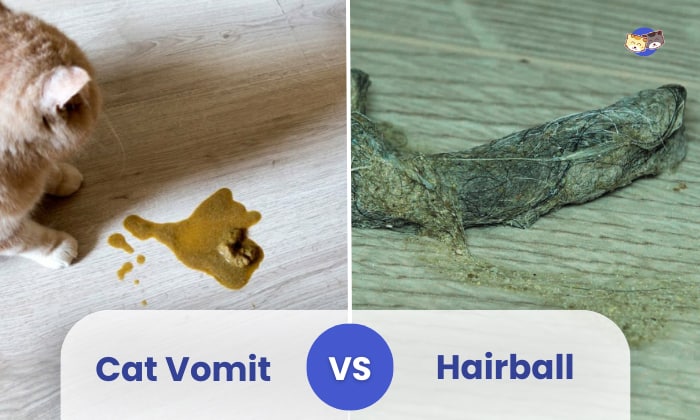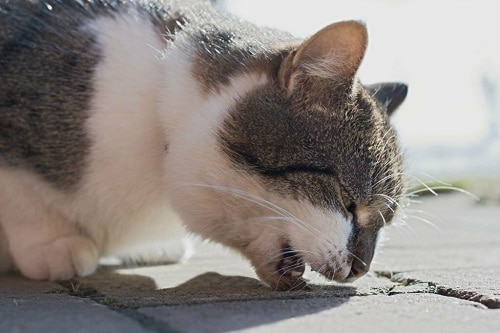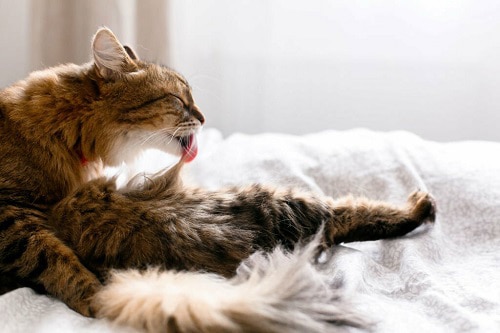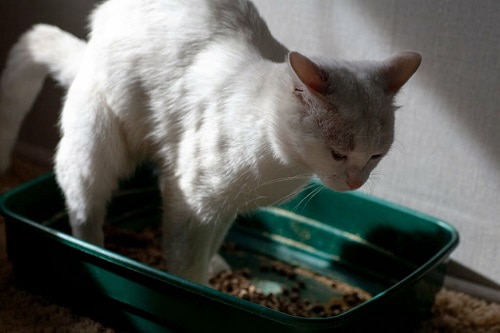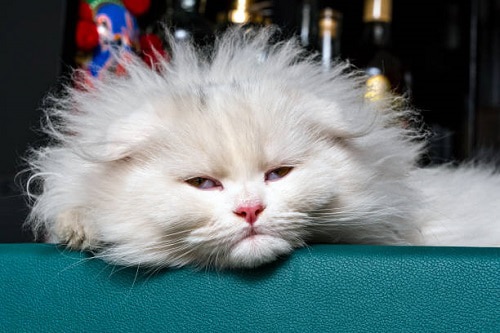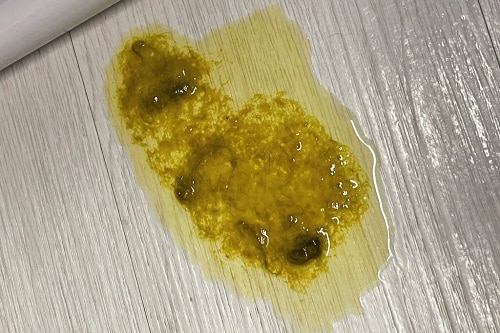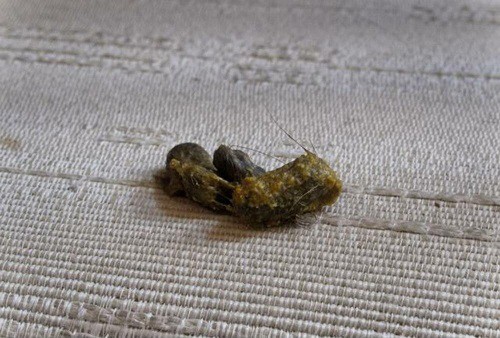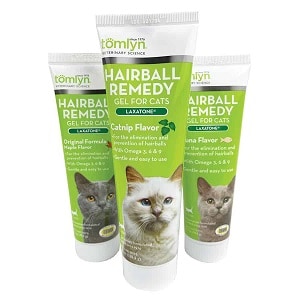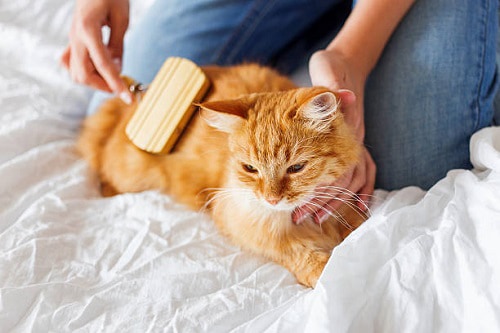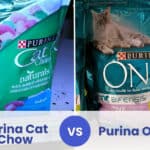Although felines are among the best-groomed pets in the world, they occasionally experience two commonly misunderstood difficulties: cat hairball vs vomit. If you own a cat, it’d be helpful to understand these differences.
In this article, “cat vomit vs hairball,” you’ll learn the vital know-how between the two common feline digestive issues and how to alleviate them.
| Aspect | Cat Vomit | Hairball |
| Composition | Food, fluids, and a bit of hair | Mostly hair with a bit of digestive fluid |
| Presentation | No definite shape | Cylindrical/round shape |
| Causes | Illness, stress, digesting something wrong | Excess licking, fur ingestion |
| Frequency | Once a month | Once every 1-2 weeks |
| Treatment | Veterinarian | Medicine |
Table of Contents
Cat Vomit vs Hairball
Cats, your furry companion, have a special way of telling you when their stomach is upset – they throw up unpleasant things that look like poop.
Sometimes, they vomit because they ate too fast or had dietary issues. Other times, it’s because of pesky hairballs from swallowing some fur while cleaning themselves that results in your cat puking hairballs.
- Vomit, often observed through cat coughing and throwing up food, is composed of various materials like stomach juices, undigested food, and possibly hair. The puke can vary in color and consistency, reflecting the cat’s diet and digestive state.
- Hairballs, resembling cylindrical clumps of fur encased in slimy material, are often a result of excessive licking and serve as a natural means for cats to rid themselves of indigestible fur from their stomachs.
Hairball types of cat vomit are common, as felines are natural groomers.
Differences Between Cat Vomit and Hairball
1. Causes
Cat vomit
Vomiting in cats can be triggered by various factors, although the most common culprit is problems in cats’ stomachs or digestive systems. That said, vomiting can stem from kidney or liver issues, pancreatitis, or nerve-related concerns.
Other potential causes include:
- Eating something toxic/spoiled
- Getting bitten by insects or snakes
- Having internal parasites like heartworm
- Infections
- Inflammation
- Medications
- Swallowing foreign object
- Food allergies
- Tumors
Hairball
Ever wondered if a cat has never had a hairball? The answer is unlikely. Cats are natural and meticulous groomers, and their natural self-grooming instinct and constant cleaning routine often make them swallow their fur.
As they lick themselves to stay clean, their tongues, which have backward-facing barbs, catch loose fur. If they want to spit out the fur but can’t, they end up swallowing it.
This ingested hair can accumulate in their stomachs, forming what is commonly known as a “hairball.”
2. Symptoms
- Cat vomit
Symptoms of cat vomiting can vary, but common signs often include lethargy, where the animal appears more tired and less active than usual. Additionally, the feline may lose its appetite due to its digestive problems.
Other telltale symptoms include a noticeable increase in thirst and unusual changes in urination habits, such as frequent or painful urination.
- Hairball
The clearest cat hairball blockage symptom is when your cat hacking but not throwing up as it try to barf the ball out. This can result in a dry cough, changes in appetite, and digestive problems like diarrhea or constipation.
3. Composition
- Cat Vomit
Cat vomit is mostly liquid, made up of stomach fluids and undigested food, with just a touch of hair in it. Vomit, in one way, is like a liquid way for your cat’s body to get rid of stuff it doesn’t want.
- Hairball
A hairball is like a clump of tightly packed hair, somewhat shaped like a cigar, with a bit of stomach juice mixed in.
Basically, a huge hairball is dominated by hair particles, and the digestive juice in hairballs helps to form them into a solid shape, making the cat hairball stuck hard to cough out.
4. Frequency
- Cat Vomit
Is it normal for cats to vomit every once in a while? The answer is yes.
Cats tend to throw up, and it is not a big deal. If yours vomits once or twice a month, it’s usually okay and part of their cycle. But if it does so once a week or more, this could be a sign of a bigger problem.
- Hairball
It’s typical for your feline to cough up a normal cat hairball once a month, as long as they’re still eating and playing as usual. But if your pet is throwing up cat fur balls every week or every two weeks, consider checking their situation further.
Prevention:
- Cat Vomit
Cats are curious and can nibble on things that harm them. So, keep dangerous stuff like toxic plants, human medicines, string, chocolate, or small items out of their reach.
- Hairball
Give your fluffy friend a good brush regularly, especially if they have long fur. It helps keep them from swallowing too much hair. You may also use a hairball-control gel a couple of times a week. It can make hair easier for your cat to pass.
You can also feed your cat special treats or supplements with extra fiber or switch to food formulated to control hairballs. This can help things move smoothly in their digestive tracks.
Treatment:
- Cat Vomit
If your cat occasionally vomits and seems fine otherwise, try not feeding them for a short while to let their stomach settle. Also, ensure that they have access to water.
After a few hours, reintroduce a small amount of bland, easily digestible food and closely monitor their condition.
Additionally, consider creating a daily stress-free environment for your cat by providing a quiet, comfortable space away from potential stressors like loud noises or other pets.
- Hairball
Consider utilizing hairball solutions found at pet stores or as per your vet’s recommendations. These remedies are often available as gels or treats and work by facilitating the passage of hairballs through improved digestive tract lubrication.
Ensure you adhere to the suggested dosage and closely observe your cat’s well-being.
Conclusion
Understanding the differences between cat vomit and hairballs is essential for any pet owner, as it can help you better care for your feline companion.
Preventing either involves various strategies and now that you know the details regarding cat vomit vs hairball, you can implement appropriate preventive measures and know when to seek professional guidance when necessary.

I am Amy Sawy, a Doctor of Veterinary Medicine (DVM) graduate from the University of Kansas. y husband, Dr. Plummer, and I own a veterinary clinic in Phillipsburg, Kansas. In addition to my professional background, I am a devoted pet owner myself, with a household that includes dogs, rodents, and most notably, cats – a total of five felines in my home.
In 2020, I joined an organization as a professional writer, leveraging my experience and collaborating with my team to deliver the most valuable information for your cat’s care.


